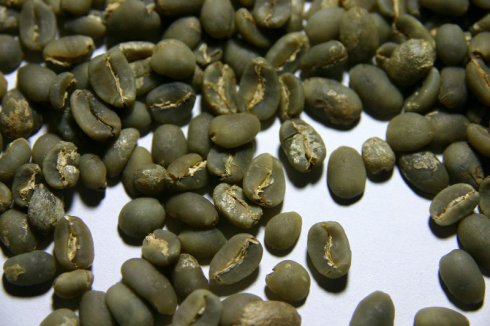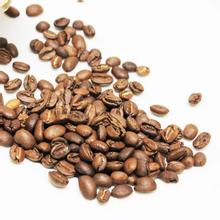About Yega Chuefei Coffee beans, taste the unique flavor characteristics of Yega Xuefei coffee.
Yirgacheffe coffee raw bean is one of the most unique coffee in the world, rare and expensive, produced in Ethiopia's sidamo province (sidamo) 4000 feet above sea level, is an outstanding representative of washed coffee in Africa, with a unique citrus, lemon fruit aroma, with jasmine aroma, moderate roasting has a soft sour taste, deep roasting gives out a strong aroma. So Yega snow coffee is suitable for medium and deep baking. It is suitable for a single cup of coffee.
[product name]: Ethiopia Yejasuffe (Ethiopia Yirgacheffe)
[quality rating]: WP Grade 2
[baking degree]: moderate baking is recommended (Medium Roast or City Roast)
[grade]: excellent
[particles]: ★ plump
[acidity]: ★★★★ slightly sour, dark chocolate aftertaste
[equilibrium]: ★★★★ is very stable
[flavor]: very unique, delicate and rich taste, with fruit and wild flavor of the wine.
[coffee producing areas]: Gedeo District, Sidamo Province, Ethiopia (EthiopiaSidamo)
[raw bean treatment]: washing and refining method
[special point]: the coffee tree originated in Ethiopia, which was originally a wild plant here. The name "coffee" comes from the Ethiopian town "Kaffa". In fact, many coffee trees in Ethiopia are still wild plants, and the coffee grown on this coffee tree is full-grained and slightly alcoholic.
Yega Snow Coffee producing area Sidamo Gedeo District, Sidamo Province
Today, Ethiopia is an important coffee producer, with about 12 million people engaged in coffee production and a major exporter of Arabica coffee beans in Africa. The high-quality coffee here is of excellent quality and is worth looking for. A variety of coffee cultivation methods can be found in Ethiopia: everything from wild coffee forests and semi-developed land to traditionally operated plots to modern plantations. About 50% of the coffee is grown more than 1500 meters above sea level.
One of the rarest Ethiopian coffee beans on the market is Yirgachaffe, which is exported to Japan and Europe but is rarely seen in the United States. This is because Dallmeyer, the German coffee roaster owned by Nestle, has established close ties with the growers of Yega Snow Coffee, thus obtaining the largest single supply of the coffee beans.
The main producing areas of Ethiopian coffee are Harald (Harar) in the east, Djimmah (southwest) and Sidamo (south). The unique fragrance of Yirgacheffe comes from Yirga, a small town in the northwest of Sidamo province. Yirgacheffe has always been famous in the eyes of coffee connoisseurs all over the world. the rare washed high-quality Arabica coffee is suitable for all degrees of baking, showing a fresh and bright aroma of flowers and fruits, beautiful and complete bean shape, which is incomparable to the general mocha. It has unique fruit aromas of citrus and lemon, with aromas of jasmine, sour taste similar to wine, clean and unmixed taste, just like freshly boiled citrus fruit tea with a long finish. Full of floral and citrus aromas, with mild acidity after moderate roasting and rich aromas after deep roasting, the rich and uniform taste is the most attractive feature of Ethiopian Yega snow caffeine. It is known as the best coffee bean in Ethiopia and is the representative of fine coffee in East Africa. Yirgacheffe is undoubtedly the most unique coffee in the world today.
Most of the refining methods of Yirgacheffe are water washing (washed), which is fermented and shelled in the washing tank for about 72 hours and dried directly outside the plant. After the raw beans are manually selected and qualified by the Ethiopian Coffee Cocoa Management Agency, they are traded and exported through competitive bidding. Its annual output is about 225000 bags (each bag of 60kg). In the past, it was mainly sold to Northern Europe (mainly Germany) and Japan, and recently it has gradually attracted the attention of North America.
In Ethiopia's coffee grading system, washing Grade 2 and dry Grade 4 are the highest grades, so there was only Yirgacheffe WP G2 on the market in the past.
Note: Yirgacheffe G1 is a grade specially made by Mitsubishi of Japan to Ethiopia Coffee&Tea Authority. It first appeared on the market in 2002-03. The method of producing G1 grade beans is not the same as the general screening, but from the raw beans in the Knoga area with the highest elevation and good soil in Yirga village, which is strictly hand-selected. The size of the raw beans is almost the same, the appearance is quite beautiful, and there are almost no defective beans, and it is more likely to show the characteristics of Yirgacheffe after drinking. Also because of the strict production process, the annual production of Yirgacheffe G1 is very rare, with an average of about 600 bags.
Source: ALBUS Arbos Coffee blending blog
Important Notice :
前街咖啡 FrontStreet Coffee has moved to new addredd:
FrontStreet Coffee Address: 315,Donghua East Road,GuangZhou
Tel:020 38364473
- Prev

Introduction to the flavor and taste characteristics and roasting degree of Sumatra Mantenin in Asian coffee beans in Indonesia
Flavor and taste characteristics: the particles are full, the taste is thick and strong. In Indonesia, coffee is usually not named Indonesia, but the name of the island that produces it. Sumatran Mantenin, Java and Sumatra Ancora are usually regarded as one of the best coffees in the world, especially Manning, which is more popular in the world. From countries all over the world
- Next

This paper introduces the different flavor characteristics of coffee beans produced in common coffee growing areas and the proportion of single beans.
● Blue Mountain Coffee is the best coffee, the origin of the Blue Mountains in Jamaica, surrounded by the Caribbean Blue Mountains, whenever the sun shines directly on the blue water, it will be reflected to the mountains and emit a bright blue light hence the name, taste sweet and smooth, but also bitter with slightly sour, generally a single drink, rarely used to mix, is the highest variety of coffee. ●, Hawaii Kona is coffee.
Related
- Guji coffee producing area of Guji, Ethiopia: Humbela, Shakiso, Wulaga
- What is the most expensive variety of Qiloso in BOP multi-variety group?
- How to store the coffee beans bought home?
- Why are Yemeni coffee beans so rare now?
- Ethiopian Sidamo all Red Fruit Sun Sun Santa Vini Coffee beans
- SOE is mostly sour? What does it mean? Is it a single bean? what's the difference between it and Italian blending?
- Is Italian coffee beans suitable for making hand-brewed coffee?
- How to choose coffee beans when making cold coffee? What kind of coffee beans are suitable for making cold coffee?
- Just entered the pit to make coffee, what kind of coffee beans should be chosen?
- Can only Japan buy real Blue Mountain Coffee? What are authentic Jamaican Blue Mountain coffee beans?

